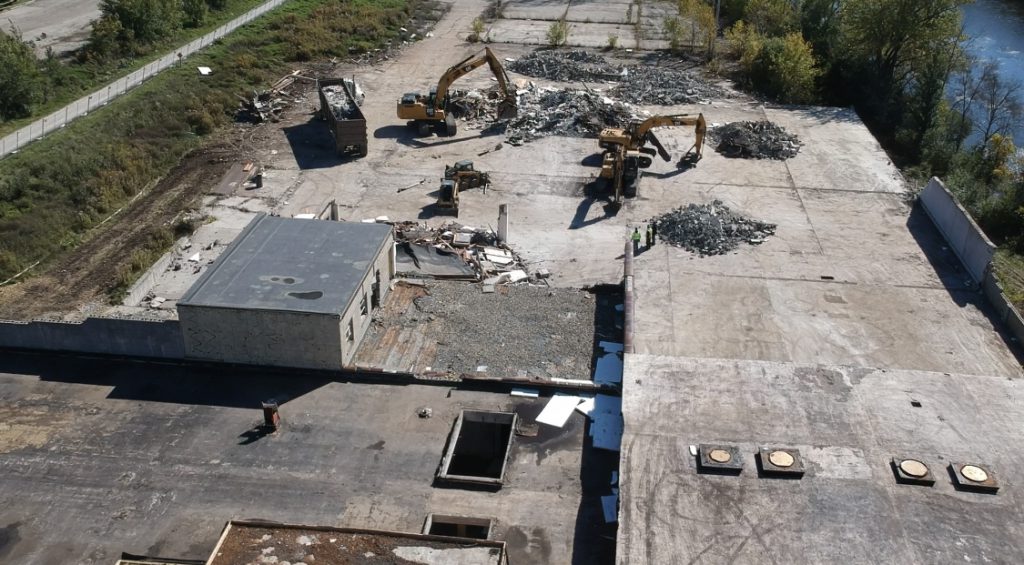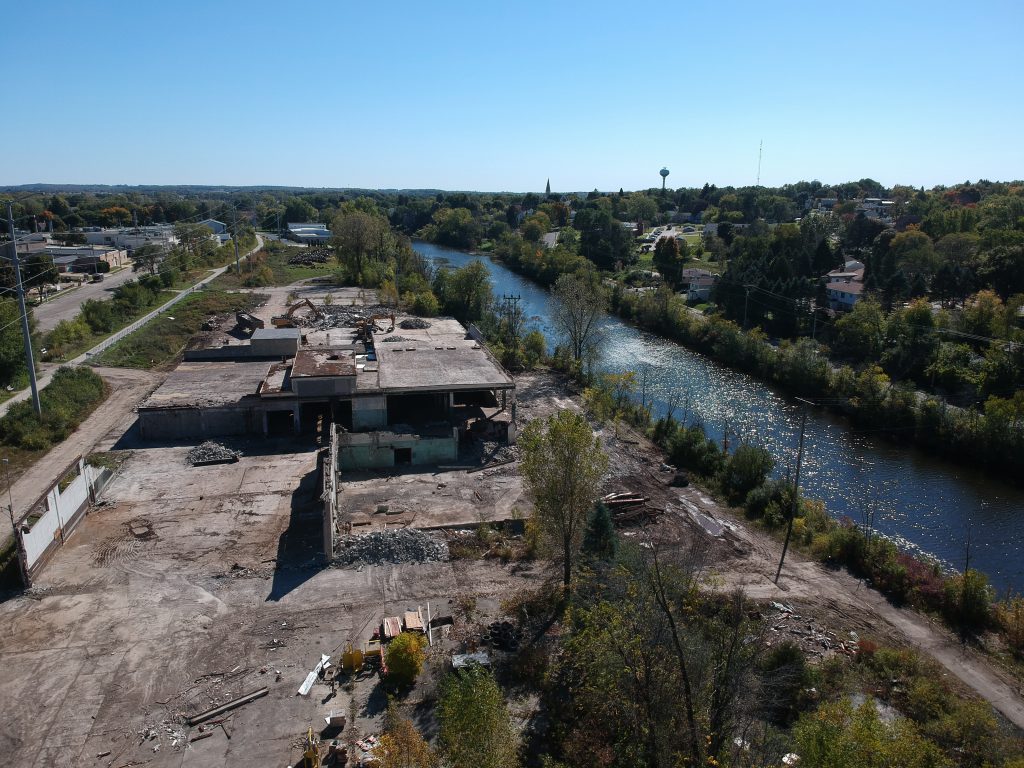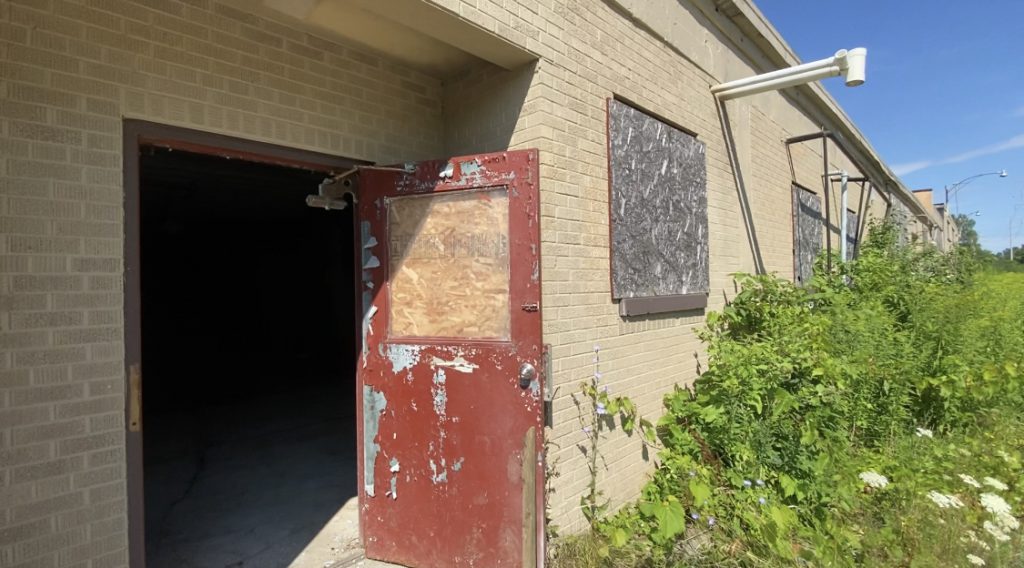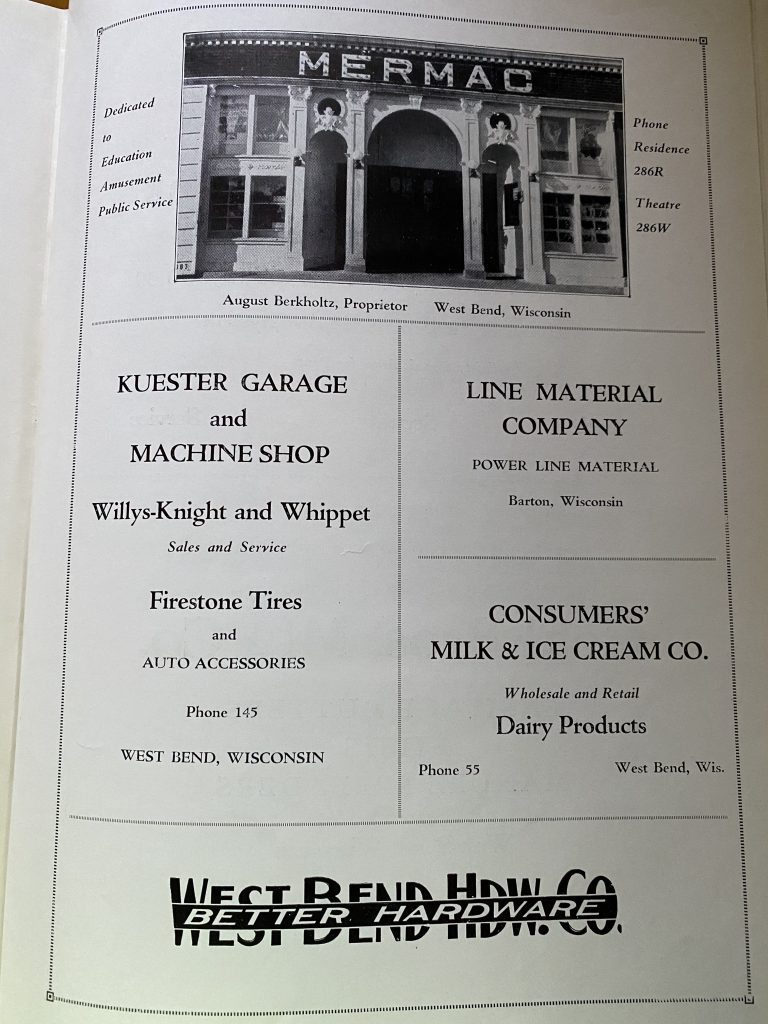October 5, 2020 – West Bend, WI – The demolition of the old Bermico building, 2100 Northwestern Avenue, on the east side of the Milwaukee River in West Bend is nearly complete.
Neighbors stood on the Eisenbahn State Trail on a sunny but very windy Monday afternoon watching as three excavators rapidly crushed walls and leveled the cement block structure.

Bermico Co. was formerly Line Material and McGraw-Edison.
Details about the site were released in a December 2015 Phase I Environmental Site Assessment prepared by Stantec Consulting Services Inc. See a portion of the report below.
The Bermico building consists of approximately 7.2 acres of land developed with a former manufacturing facility consisting of numerous interconnected one- and two-story buildings covering an approximate 68,000 square foot area near the center of the Property. The remainder of the Property is covered by deteriorated pavement and areas covered by grass, brush, small trees, or forest.

Surrounding properties are a mix of commercial and industrial properties.The Property has a long history of industrial use. The primary item manufactured at the Property from at least 1929 to 1980 was a coal tar-impregnated cellulose-fiber pipe commonly referred to by the trade name “Orangeburg pipe.”
Since 1980 various small businesses occupied portions of the facility buildings and the Property appeared to be used primarily for storage. Multiple plastic recycling businesses operated at the Property during the 1980s and 1990s and resulted in significant storage of plastic.
Since the 1980s, the facility buildings were allowed to deteriorate with minimal repairs. Numerous permitted and unpermitted building modifications and demolitions have occurred at the Bermico site. Remnants of supplies, equipment, and structures remain throughout the Property building.

This assessment has revealed no evidence of recognized environmental conditions (RECs) in connection with the Property except for the following:
• Industrial manufacturing activities including the historic transfer, storage, and use of coal tar at the Property.
• Historic outdoor storage of Orangeburg pipe.
• The transfer and storage of petroleum products and documented diesel fuel release to soil
on the Property.
• The historical presence on the Property of a railway spur, because transfer of hazardous
materials and/or petroleum products may have resulted in spills and affected soil and/or
groundwater quality at the Property, in particular, in the vicinity of the former railroad spur.
• The documented release of contaminants from the Property to the sanitary sewer system.
• Petroleum product and hazardous substances releases to soil at the Property documented in a Phase II ESA.
• Orangeburg pipe and pipe fragments comingled with other fill materials in areas on the
north side of the Property.
Below is an ad from the Line Material Company as published in the 1929 West Bend High School yearbook.

In its heyday Bermico and Line Material employed over 100 people including Carl Kufahl and Marion Winninghoff.











I had never heard about Fiber Pipe until recently when I bought a piece of property and discovered that it had Orangeburg Pipe (stamped on the side with red ink) as a sewer line. Half of it was still in pretty good condition for being in the ground for 63 years. That is when the house that was there was built, so I assumed that’s when the pipe was installed. I collected a couple of descent pieces when the new line was being laid, but I would like to have a new piece. Surely there is some still out there?